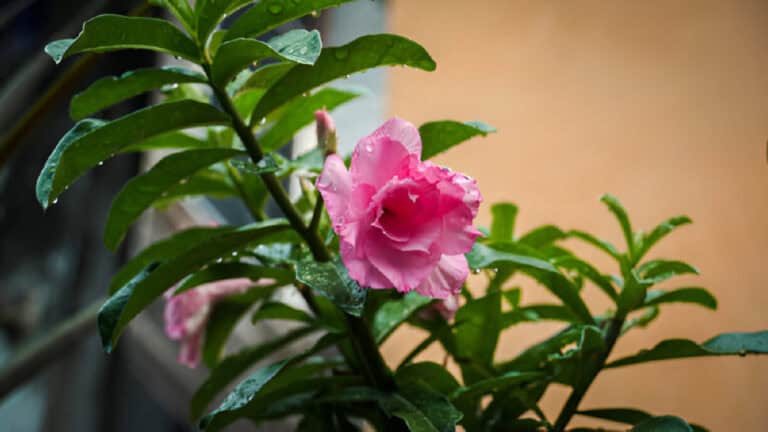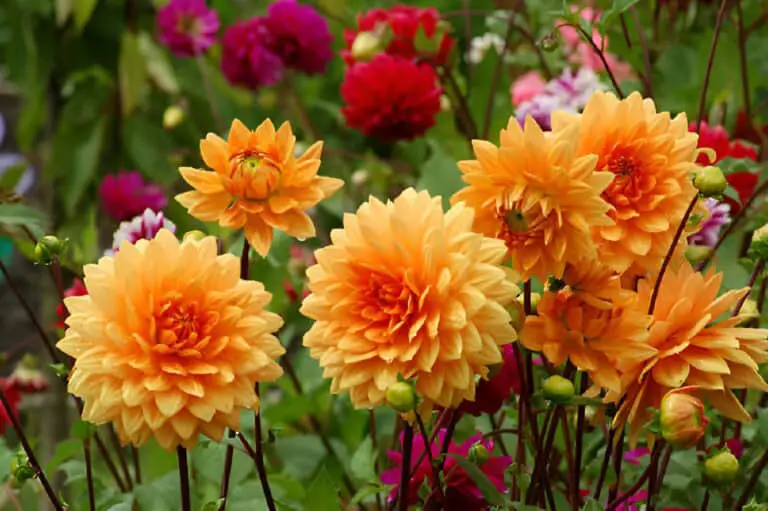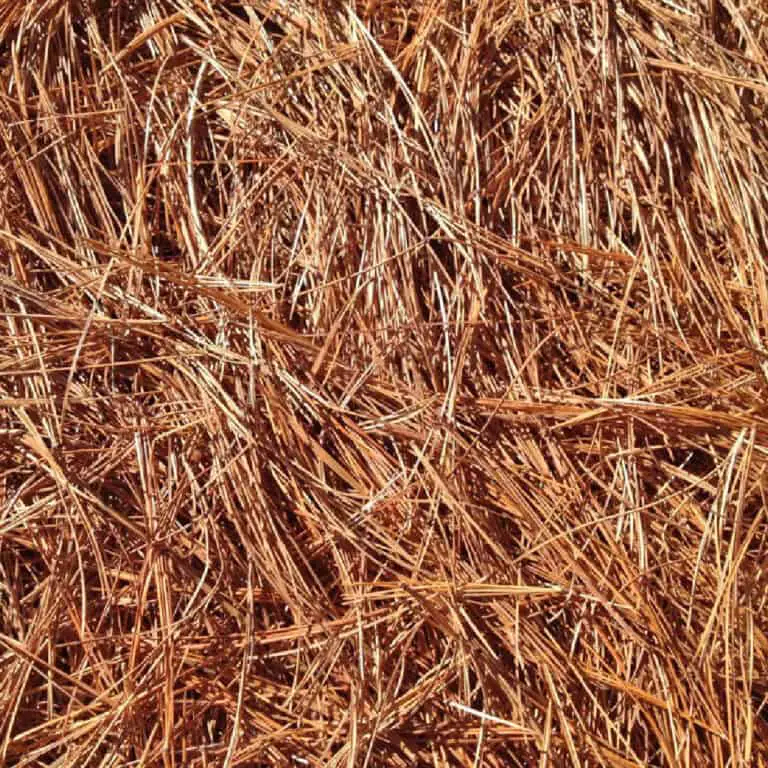Why Is My Boxwood Losing Leaves (And How to Treat Them)
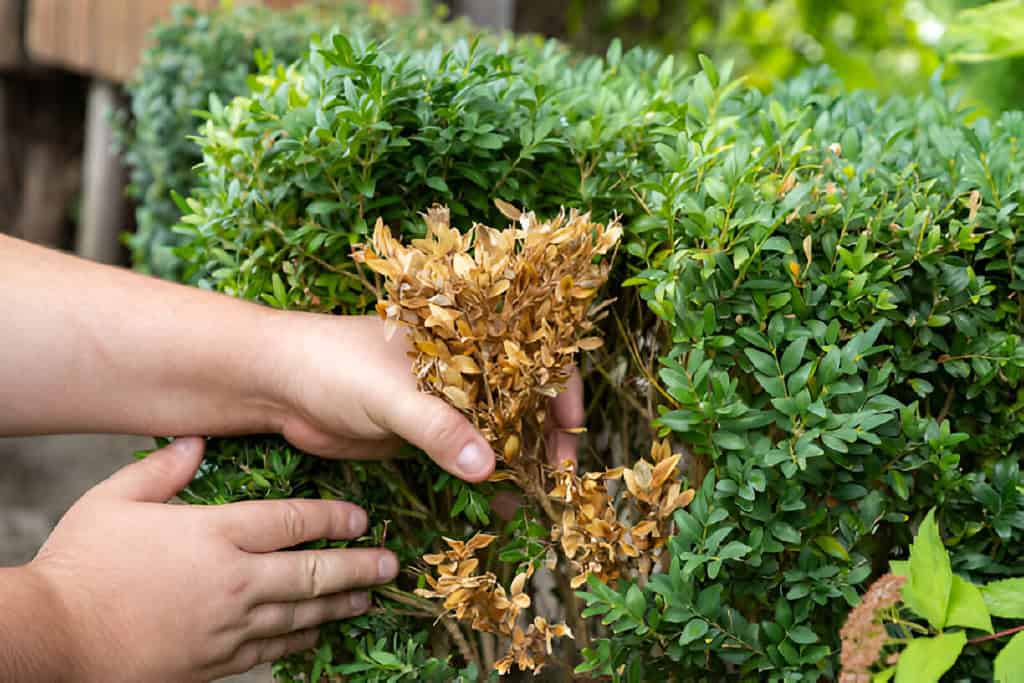
Boxwoods are beloved for their lush, evergreen foliage, making them a popular choice in gardens and landscapes. However, when you notice your boxwood losing leaves, it can be a cause for concern.
Many factors can make boxwood drop leaves. These range from stress to pests and diseases. Understanding these causes and knowing how to address them can help you restore your boxwood’s health and beauty.
Early Signs of Boxwood Decline
Early signs of boxwood decline include:
- Inner Leaf Shed: Leaves on the inner parts of the shrub may start to fall off, exposing twiggy growth to potential infections from stem canker fungi.
- Weak, Sparse, or Spindly Growth: Boxwood decline can cause weak and sparse growth, which can be a sign of stress and disease.
- Yellow-Orange Discoloration of Foliage: Leaves may turn yellow or orange, which can be a symptom of fungal infections like Macrophoma and Volutella.
- Premature Leaf Drop: Leaves may drop prematurely, which can be a sign of stress and disease.
- Stem Discoloration: Stems may turn yellow or brown, which can be a sign of fungal infections like Volutella.
These early signs can show that the boxwood is stressed and prone to disease. It’s crucial to fix the causes and use proper care to prevent further decline.
Why Is My Boxwood Losing Leaves?
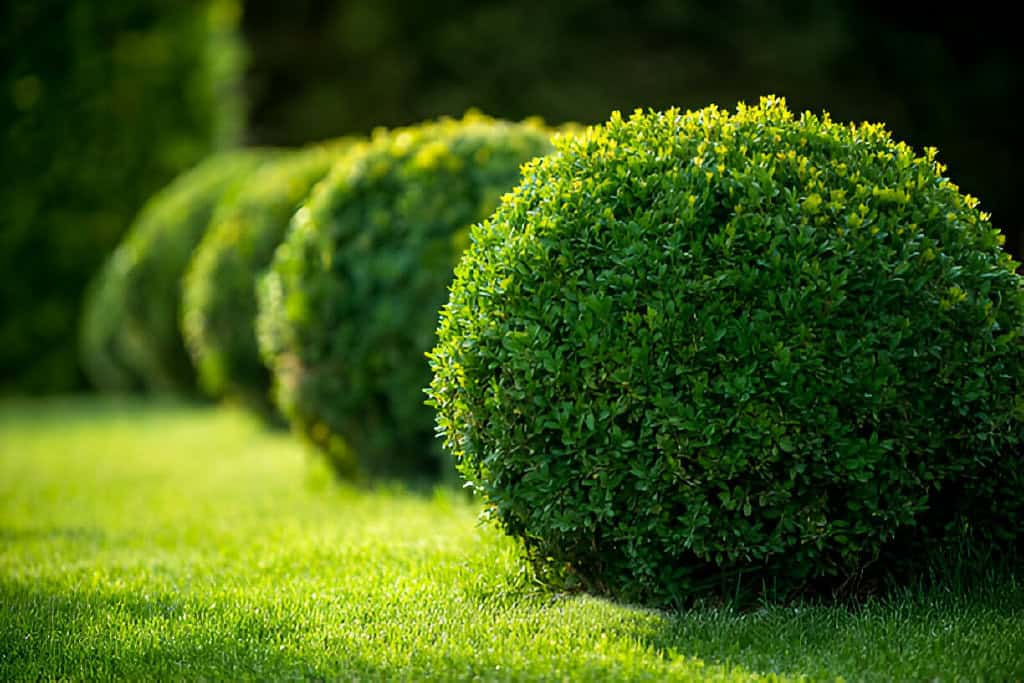
If you’ve noticed your boxwood losing leaves, it could indicate an underlying issue that needs attention. Many factors can make boxwoods lose leaves. These factors range from stress to pests and diseases.
Environmental Factors
1. Light Exposure: Boxwoods prefer partial shade to full sun but can struggle in overly shady or intensely sunny locations. Insufficient light or excessive exposure to direct sunlight can stress the plant, leading to leaf loss.
Solution: Ensure your boxwood is planted in a location that provides adequate light according to its preferences. If needed, prune nearby plants or structures to allow more light without exposing them to harsh, direct sunlight.
2. Watering Issues: Improper watering, either too much or too little, can cause boxwood leaves to turn yellow and drop off. Inconsistent watering can also stress the plant, affecting its ability to retain leaves.
Solution: Water boxwoods deeply and regularly, especially during dry periods. Ensure the soil is well-drained to prevent waterlogging, which can lead to root rot. Mulching around the base of the plant helps retain moisture and regulate soil temperature.
3. Poor Air Circulation: Dense foliage can lead to humidity and promote fungal diseases.
Solution: Prune the center of the shrub to improve air circulation
Pest and Disease Issues
1. Boxwood Leaf Miner: These tiny larvae feed inside boxwood leaves. They cause the leaves to turn yellow, then brown, and to drop early.
Solution: Prune affected branches and dispose of infested leaves. Apply insecticidal soap or neem oil to control leaf miners. Regular monitoring helps catch infestations early.
2. Boxwood Blight: A fungal disease that causes dark spots on leaves, which turn yellow and fall off. Boxwood blight can spread rapidly in warm, humid conditions.
Solution: Remove and destroy infected plant parts. Apply fungicides containing chlorothalonil to prevent further spread. Improve air circulation around plants to reduce humidity.
3. Boxwood Psyllids: These tiny insects curl up leaves, causing them to cup.
Solution: Prune affected areas and use insecticidal soap or neem oil to control infestations. Remove dead, dying, or diseased leaves. This prevents disease spread and promotes growth.
4. Root Rot: Fungal infections can cause root damage, leading to leaf loss.
Solution: Prevent root rot by ensuring good drainage and avoiding overwatering
Nutritional Deficiencies
1. Lack of Nutrients: Boxwoods require sufficient nutrients, particularly nitrogen, to maintain healthy foliage. Deficiencies can cause leaves to yellow and drop.
Solution: Test the soil to determine nutrient levels. Amend with a balanced fertilizer formulated for acid-loving plants. Apply fertilizer according to package instructions to avoid over-fertilization.
Common Problems Table
| Cause | Symptoms | Solution |
| Light Exposure | Yellowing leaves, sparse growth | Ensure adequate light without direct sun exposure. Prune if necessary. |
| Watering Issues | Yellow leaves, leaf drop | Water deeply and regularly, avoid waterlogging. Mulch to retain moisture. |
| Boxwood Leaf Miner | Yellowing, browning leaves with mines | Prune affected parts, use insecticidal soap or neem oil. Monitor regularly. |
| Boxwood Blight | Dark spots, yellowing leaves, rapid leaf drop | Remove infected parts, apply fungicide, improve air circulation. |
| Nutritional Deficiencies | Yellowing leaves, poor growth | Test the soil and apply balanced fertilizer for acid-loving plants. |
| Also read: Why My Star Fruit Tree Is Losing Leaves? |
How Can I Tell if My Boxwood Is Healthy Despite Losing Leaves?
It can be concerning to see your boxwood losing leaves, but there are several ways to assess its overall health despite this issue. One key indicator of a healthy boxwood is its growth pattern. A healthy boxwood will exhibit steady, uniform growth, with new leaves sprouting regularly. Inspect the branches and stems for any signs of damage. This could be cracks, splits, or discoloration. These issues could indicate underlying problems.
Another sign of a healthy boxwood is its foliage density. While some leaf loss is normal, a healthy boxwood will maintain a relatively dense canopy. If you notice significant thinning or bare patches, it could be a sign of poor health. Additionally, examine the color of the leaves. Healthy boxwoods have vibrant green foliage. So, any yellowing or browning could mean nutrient deficiencies or other problems.
To ensure your boxwood remains healthy, proper care and maintenance are crucial. Water, fertilize, and prune your boxwood often. This can help it grow well and avoid problems that cause leaf loss. Consulting with an arborist or horticulturist can also provide valuable insights. They can help with your boxwood’s health and any concerns.
Conclusion
Maintaining healthy boxwoods requires understanding and addressing the reasons behind leaf loss promptly. You must adjust light and water. You must manage pests and diseases and fix nutrient problems. Proactive care keeps your boxwood bright and tough. Follow these guidelines. Use the right treatments. You can treat leaf loss in your boxwood. Then, you can enjoy its lush, green leaves all year.

